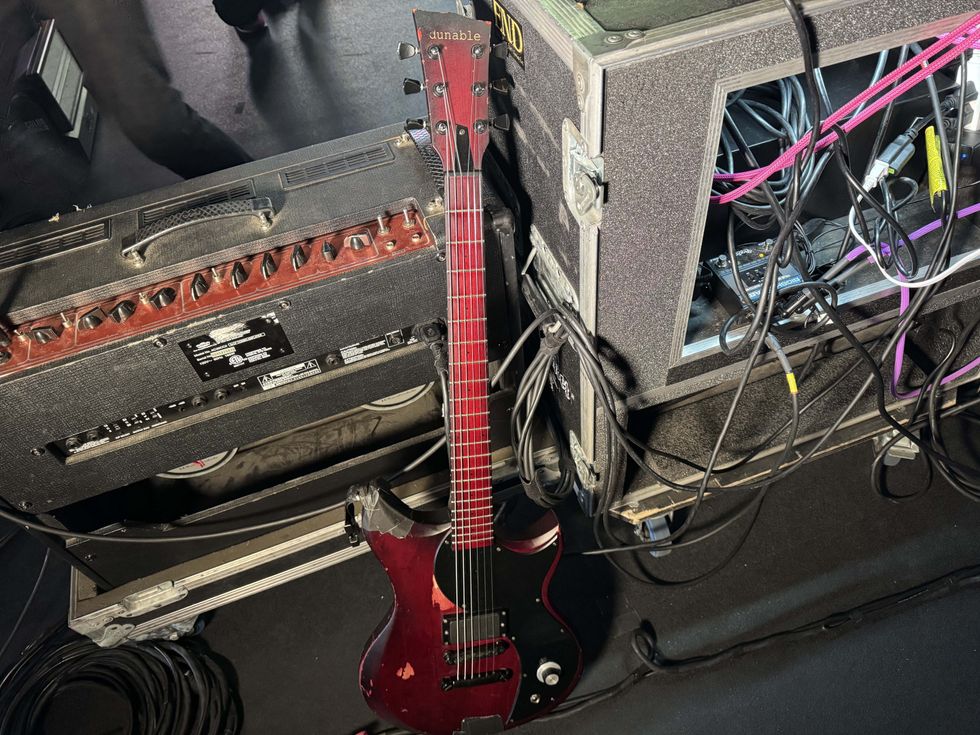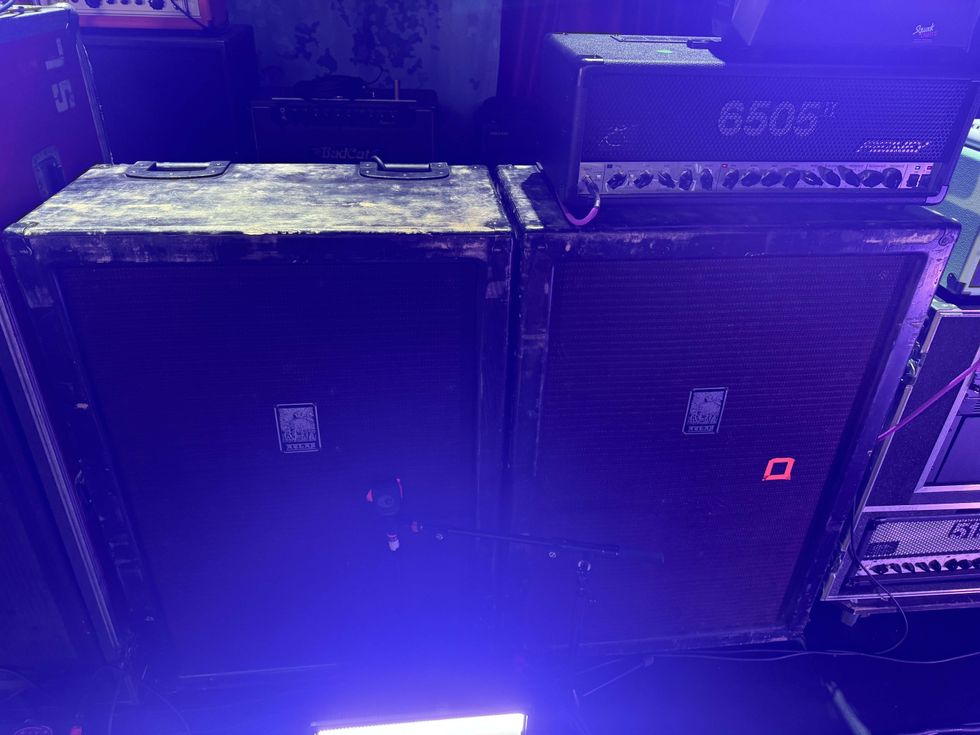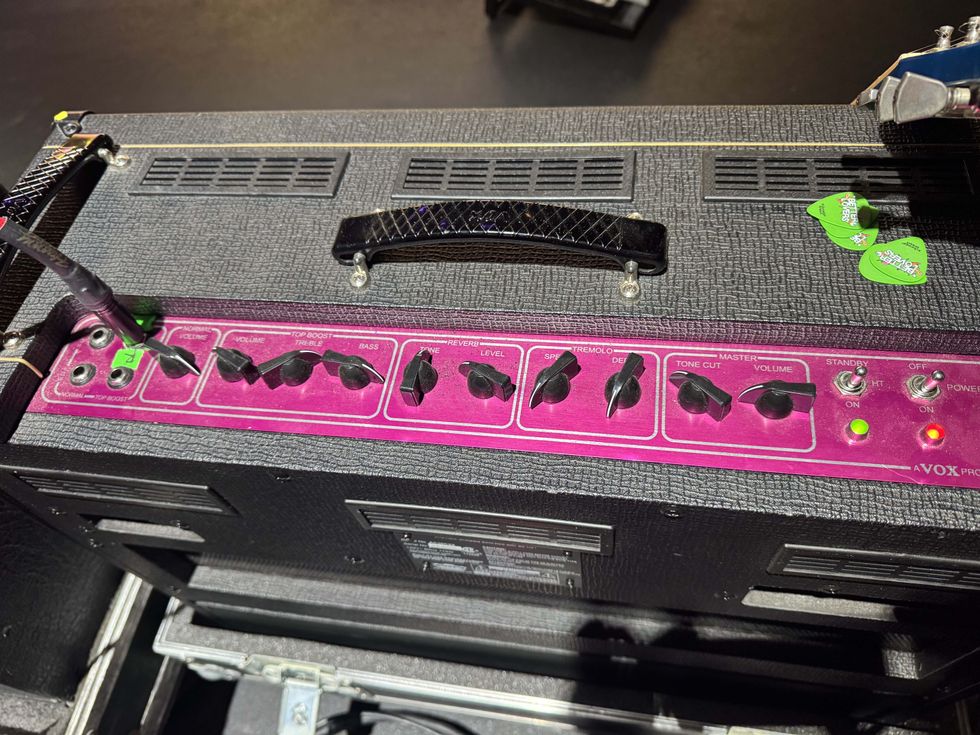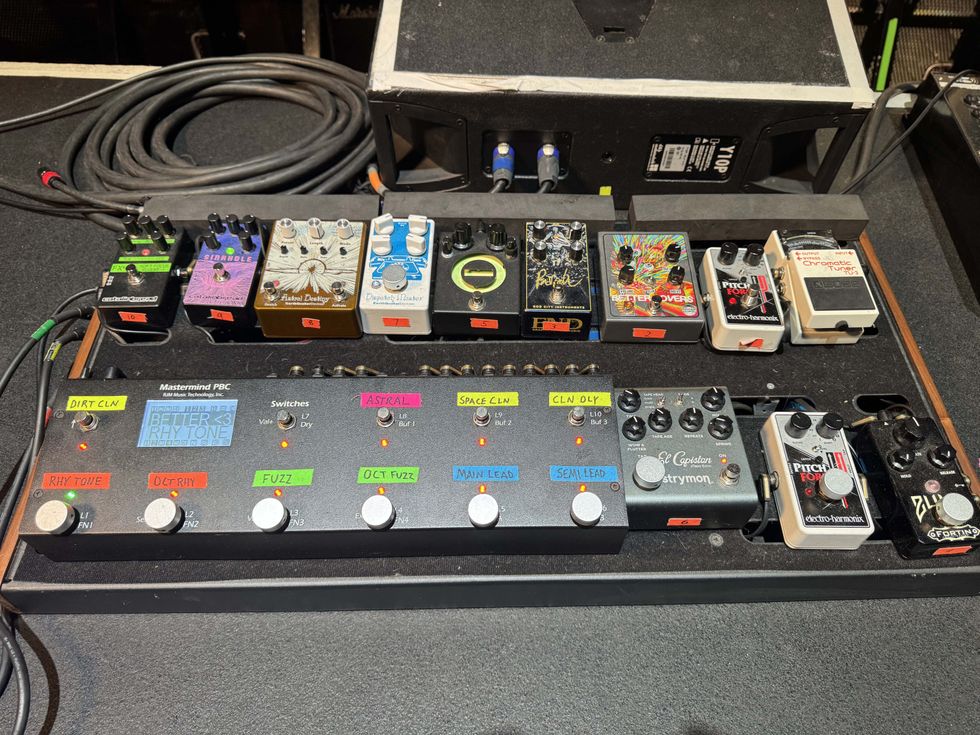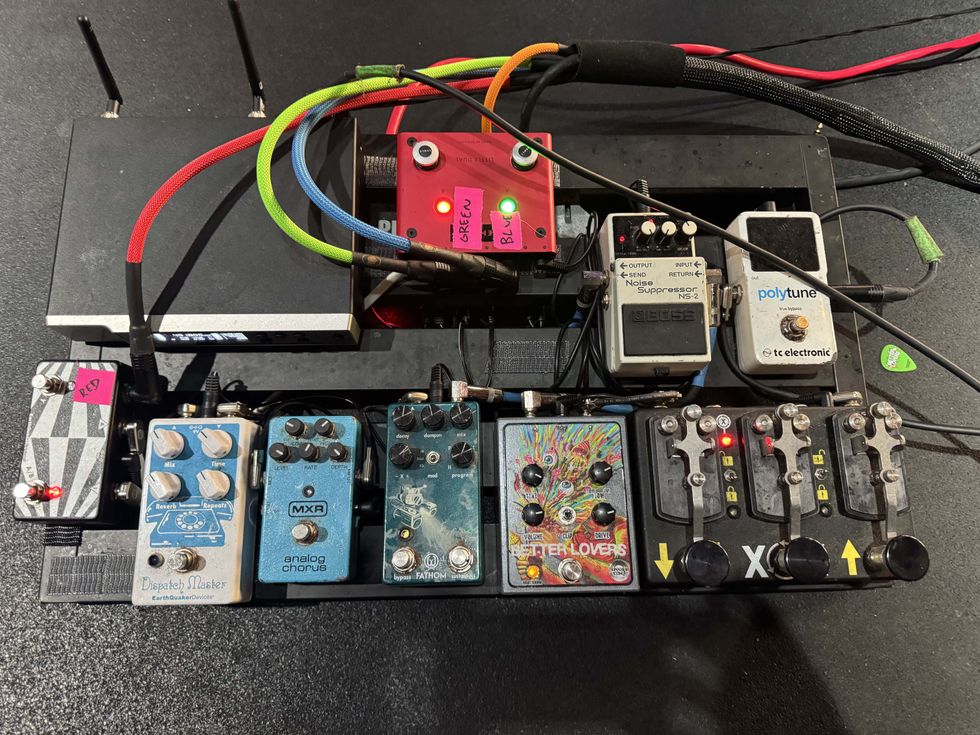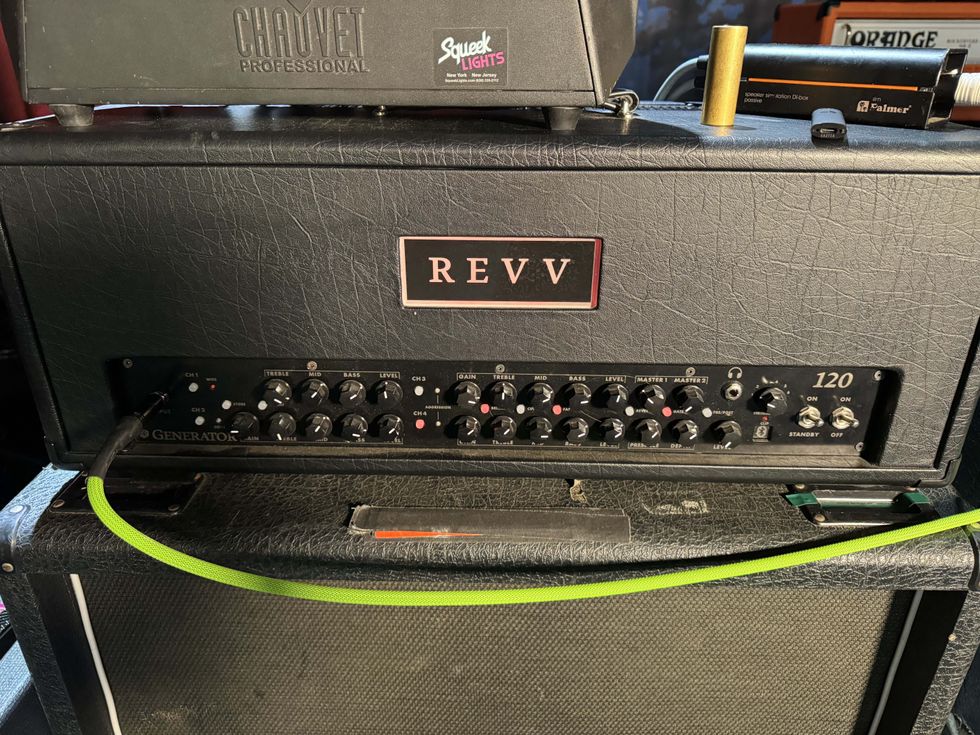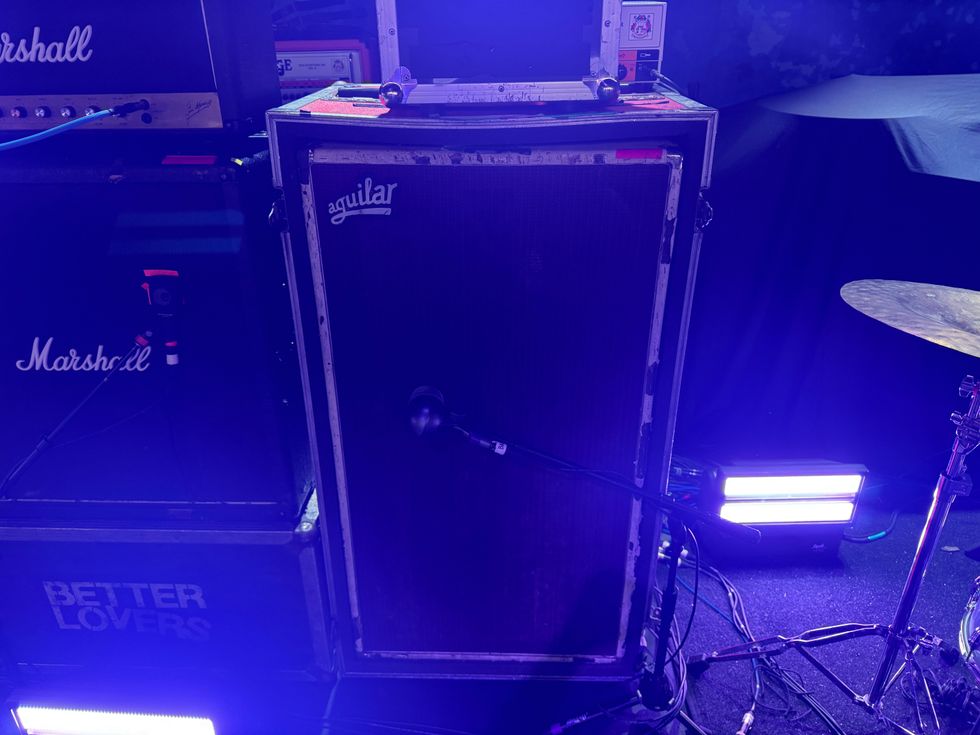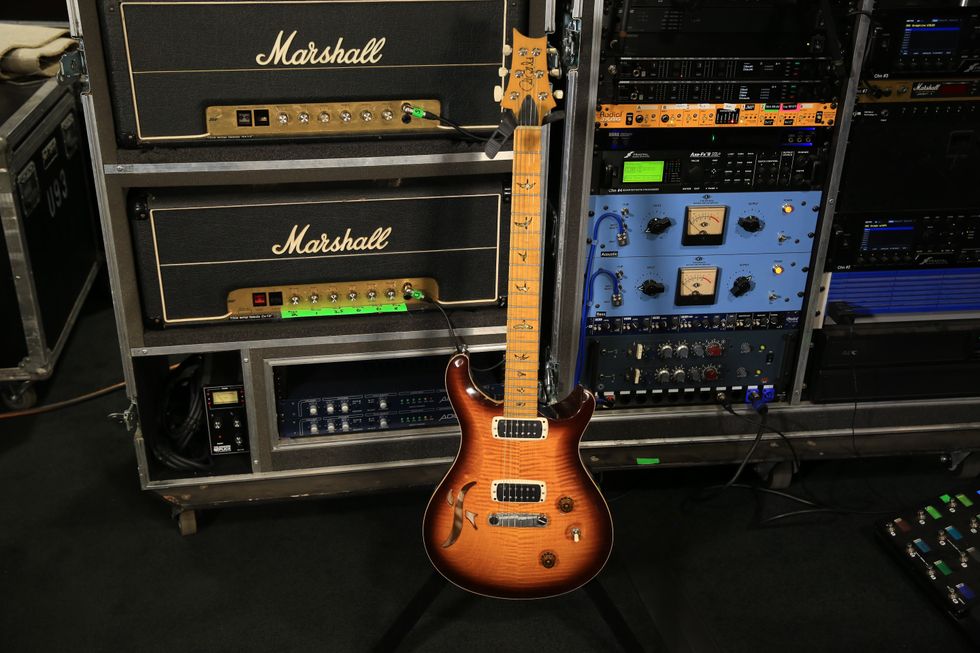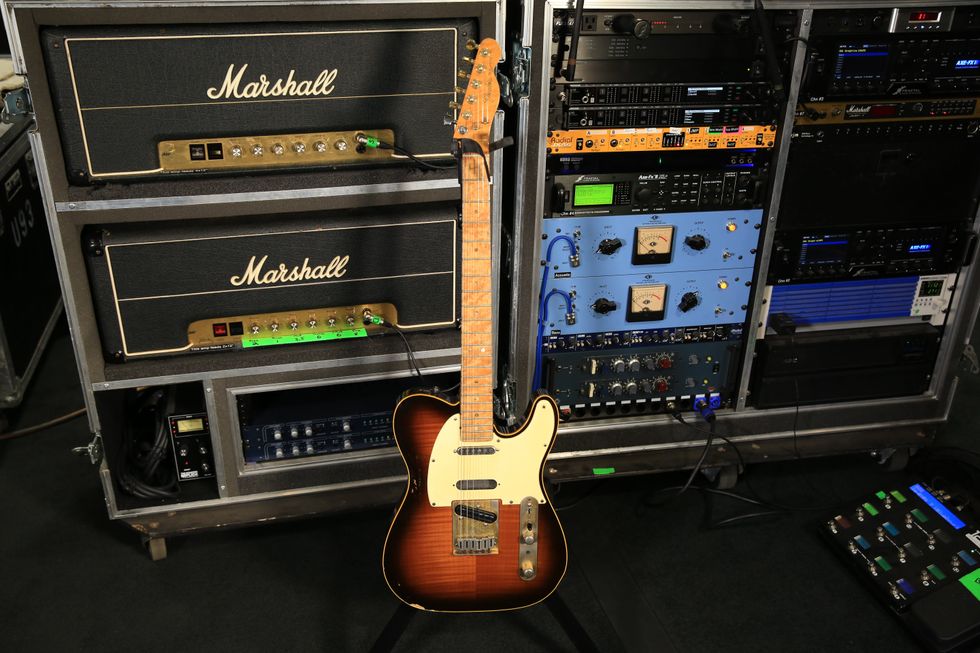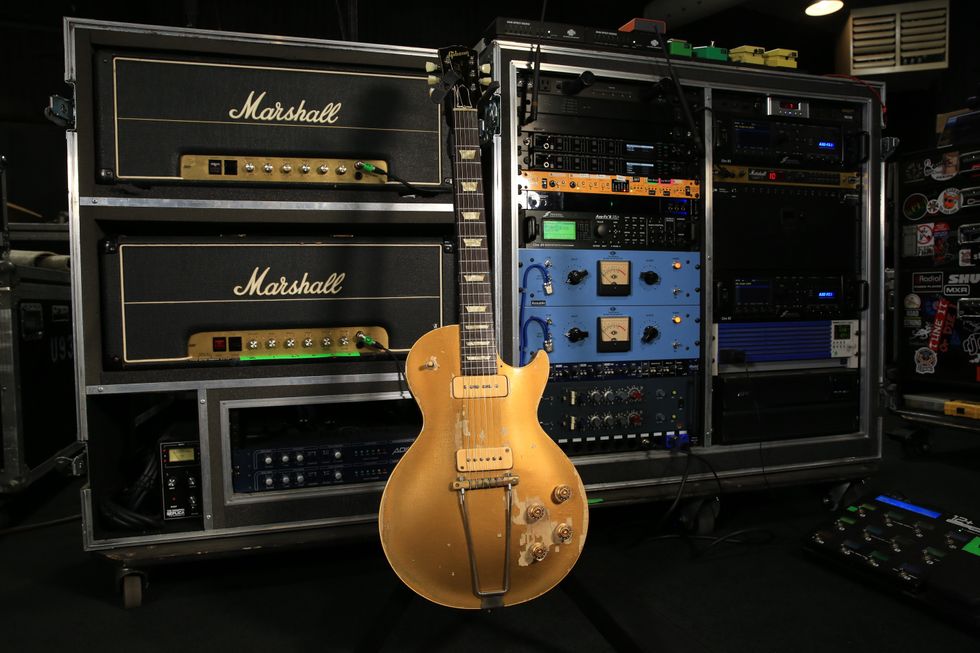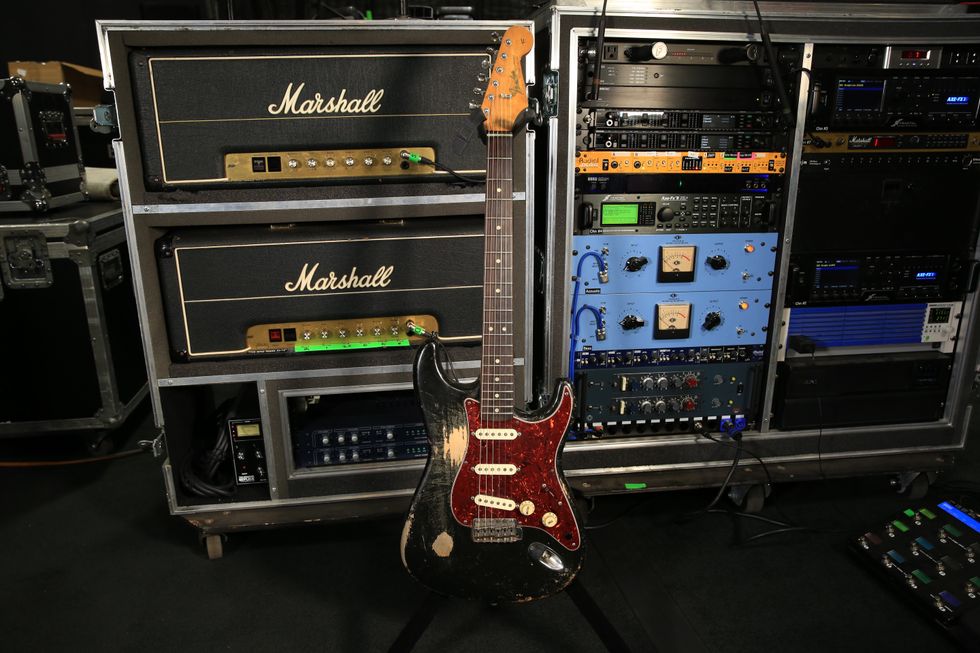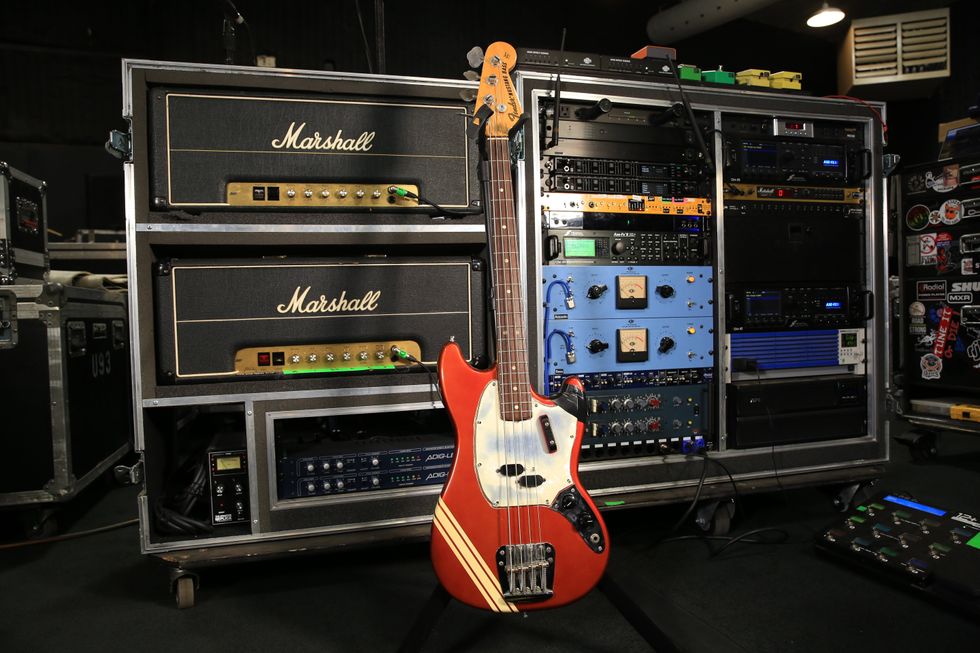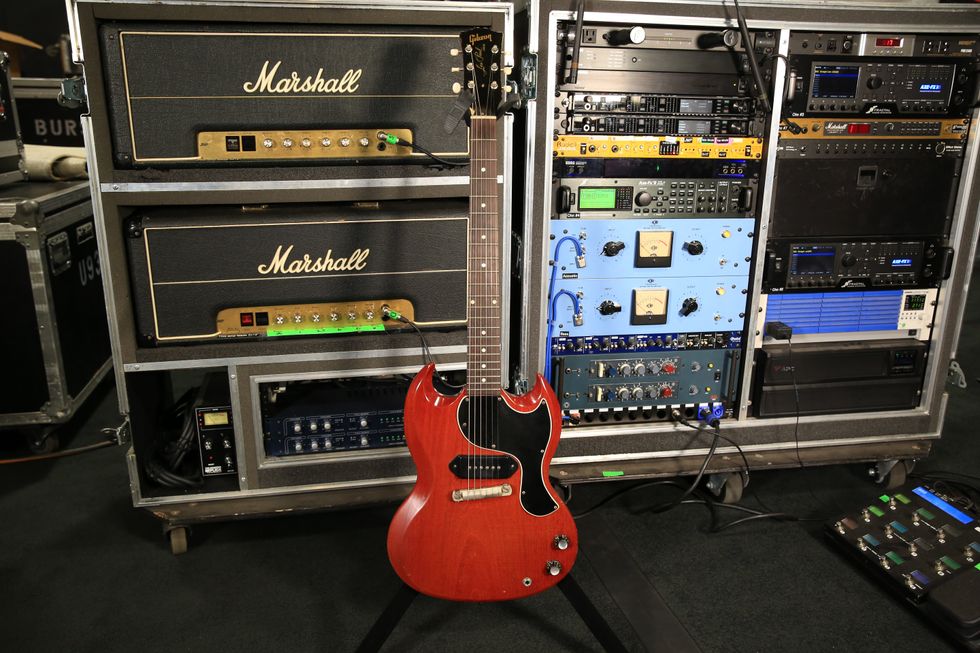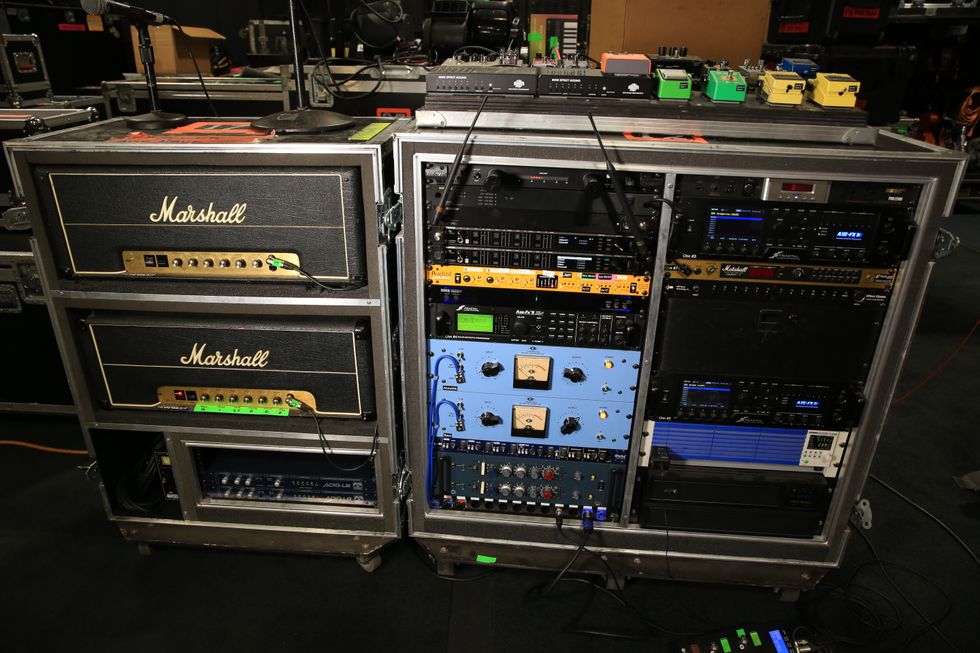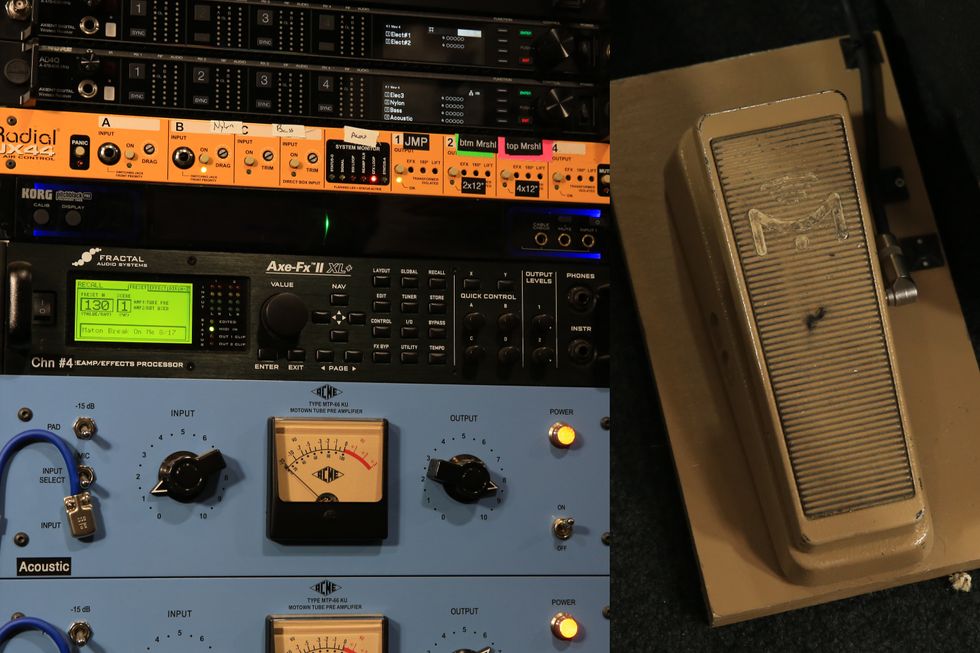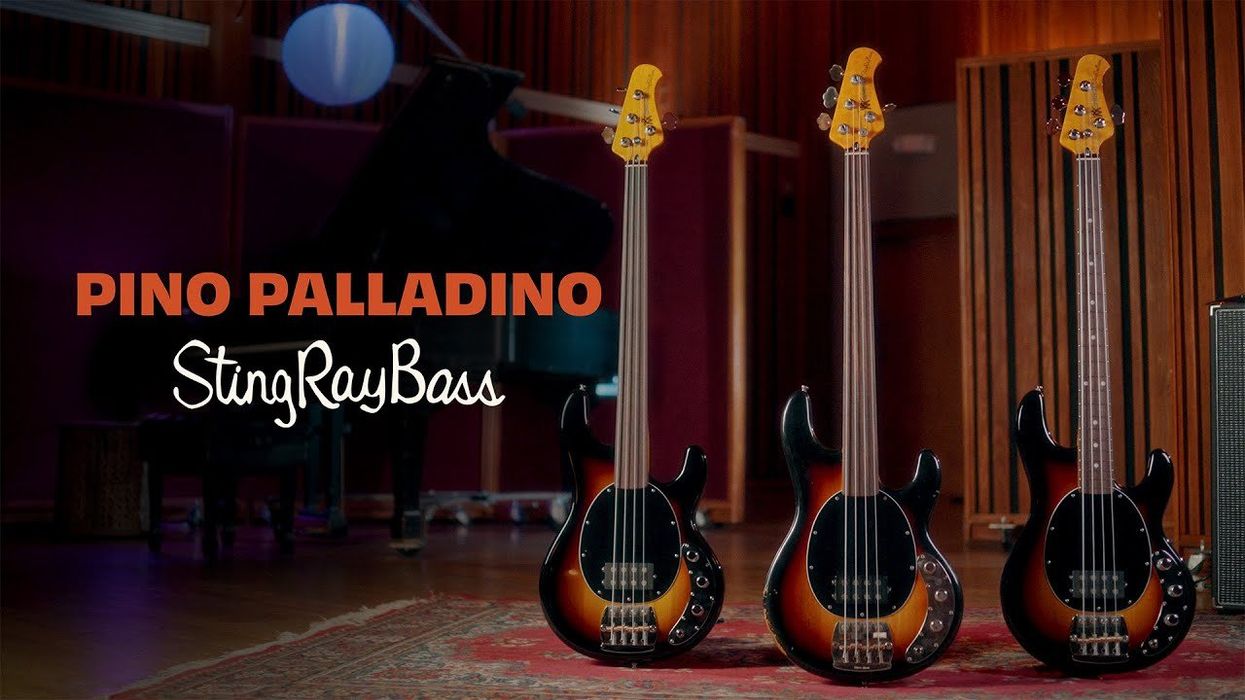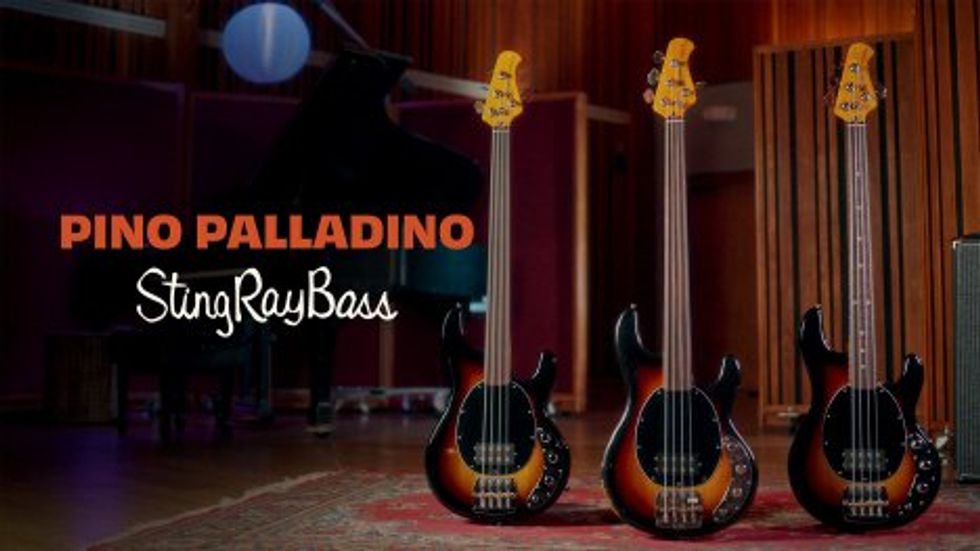Recorded direct using PreSonus FireStudio and PreSonus Studio One 3.
Clip 1: Tone switch off
Clip 2: Tone switch on
Clip 3: Fuzz circuit engaged
You know what I would love to do? Tour the world in support of some heavyweight bands, then maybe intern at a respected bass builder's shop, and then, just maybe, design bass guitars that make a big impact among players in the know.
Or, I could just live vicariously through Jake Serek, who has done everything on my list, and then some. Jake has pulled from his experience on the road, his work at Lakland, and—through his own trial and error—made Serek Basses into a Cinderella story about an independent builder who hit the jackpot.
In a relatively short period, Serek's Chicago-based company has made a name for itself by designing unique, vintage-inspired basses. Even though Serek makes 34"-scale instruments, industry heavies such as Tim LeFebvre (David Bowie) and Brandon Boone (Tedeschi Trucks Band) lean toward its short-scale offerings. We recently got to look at Serek's latest 4-string shorty: the Grand.
The Grand Design
The Grand's appearance is just that. Opening Serek's very stylish gig bag, I giggled a little at what I saw. First, there's the body shape, which is vintage-inspired and sits like a race car. There's the gold racing stripe, the bowling ball scratch plate, and the offset TV Jones Thunder'Blade pickup. And finally, there's the simple control set that just begged me to say hello.
The Grand basses are made in small batches. A 30.5" scale is how manufacturers typically design short-scale basses. But Sereks play bigger, so there's no loss of bass integrity just because the instrument is shorter or lighter. (This Grand weighed in at just over 7 pounds.) The roasted-maple neck has the right amount of heft and feel, with an easy C-shape, and the bone nut measures at 1 5/8", so it's very Jazz-like in that regard. The nickel frets were perfect, with no edges or anomalies, and the action from the factory was set very comfy. The oversized headstock with Hipshot Ultralites balances the Grand quite well, and the 4-bolt design is solid, with a super-tight neck joint.
A Grand Vernacular
I plugged the bass into an Eden Terra Nova head pushing a ported 2x10 cabinet. The controls on the Grand are minimal, with just a volume dial and a 3-way toggle switch. Instead of a traditional tone control, the toggle essentially offers “tone open" or “tone off," plus a mystery third position to be revealed in a moment.
With the tone open (middle position), I rolled up my lonely volume pot and got to work. Thunder'Blade pickups are true supercharged engines on basses, and this one's no exception. The bass sounded big and authoritative with tons of low-end air movement and all the articulation you'd need. But to isolate the Grand's bass tone to one lane wouldn't be fair. This isn't a P- or a J-style setup, because it speaks a language all its own. The Grand is a touch throaty, which allows it to cut through the mix, for sure.
Flipping the toggle to the tone-off position, I wasn't quite as excited with the prospects. The tone-off vibe certainly has a place in the musical universe. (Earth-shaking reggae and dub bass players take note.) I'm not a designer or audio engineer, but maybe a “half-tone" option would have been cool on this bass, as opposed to the nothing-or-all approach.
The third position on the toggle is the activation point for the “Skuzz Serkit," a very clever passive-fuzz circuit. I am a fan of onboard effects. I know that some companies back in the day went a bit overboard at times, but being able to hit some fuzz on the fly is a wonderfully freeing feeling. And it adds to the nostalgia this bass evokes. Plus, the fuzz circuit sounds really good, so that certainly helps. It's beefy and impactful, without being overbearing.
While I appreciate the design of the controls, I do wish I could have a bit more, well, control over the tone. In my world, a tone control is my “situation adjustment," so I like being able to go higher or lower depending on the vibe of the session, the push of the effects, or even the genre of music. This option is not available here, but it's also not necessarily a bad thing. To many players, this won't be an issue at all, because the tone in the open position is a great one that will work in numerous situations. Those few times adjustments might be needed, players will just need to take a different route to their exact tone.
The Verdict
I really like this bass. For those of you thinking a short-scale isn't your bag, you'd be pleasantly surprised with this one, simply because it plays and sounds much bigger than it really is. Being an old soul with retro love, I like that the Grand has an onboard fuzz switch (and no battery required!) that gives plug-and-go purists an option to dive into some grit without a pedal.
The Grand is well-balanced, super comfy, and just looks cool. With the absence of a traditional tone control, I did, however, wish there was maybe a “half-tone" setting, or maybe an additional mini-toggle. Sure, the price might be hefty for some, but there is something to be said for a well-built, U.S.-made instrument that will mature with age—and with grand style.

















